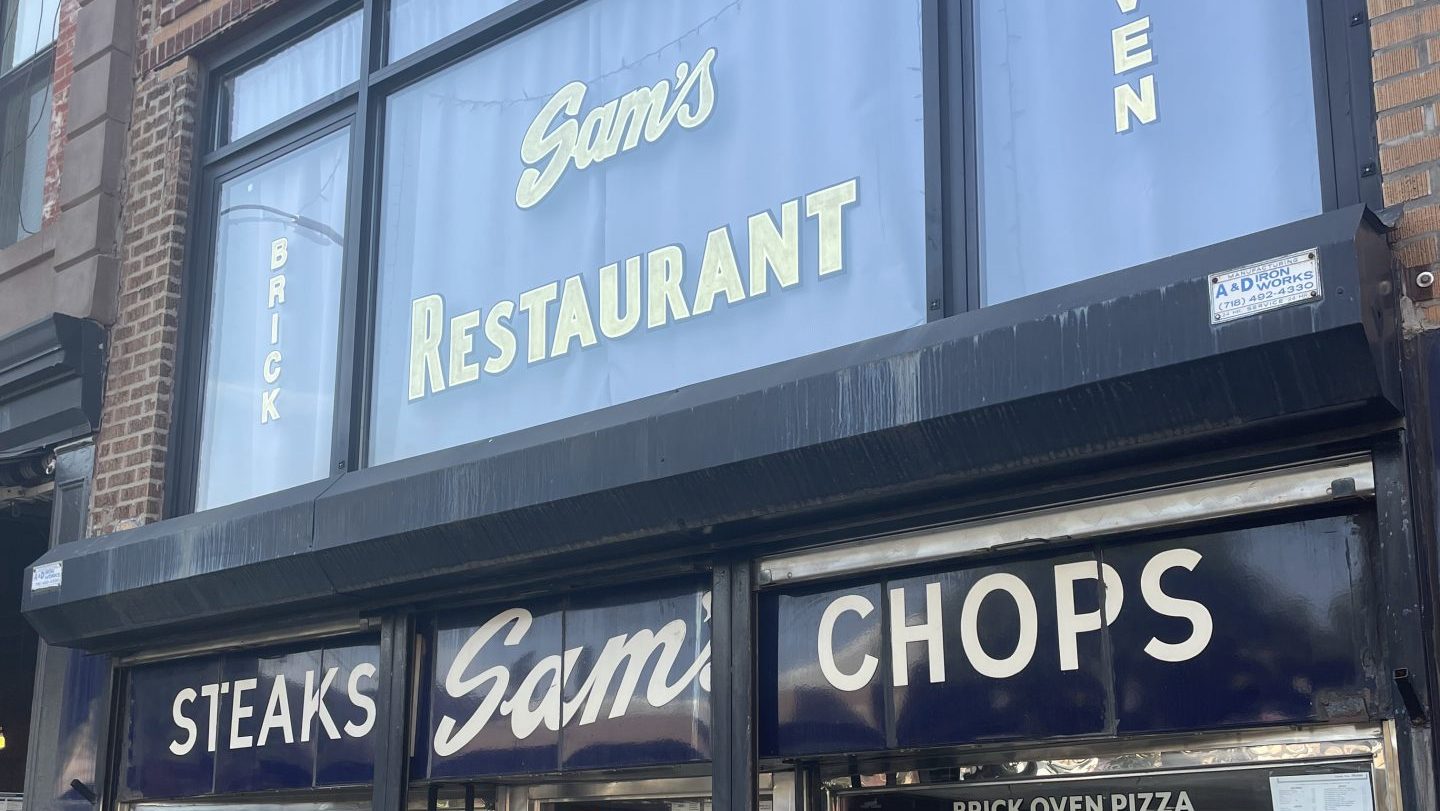In Brooklyn, New York, is a restaurant called Sam’s Pizzeria. It embodies the “red sauce Italian” like no other I’ve been to. There is the owner, Louis, a charismatic man who sounds a bit like Silvio from The Sopranos. A scene from the show was filmed at Sam’s – there are photos of the cast on the wall.
I met Louis on a Friday afternoon while walking back to the subway after two pints of lager and a plate of fried pickles. His restaurant wasn’t open but he was standing outside, talking on the phone.
I stopped to take a photo of the signage, a beautiful timewarp, and he invited me in and showed me around. Sam’s is a place made of old wood and red banquettes, of bottles of house wine and streaks of elegant chrome. It is memorable.
The next day, I returned to eat, and the place was rammed. Louis was on song, shifting between tables of regulars. I had potato croquettes for $6 a portion and a sub-$15 plate of spaghetti with “meat sauce”. They were simple dishes but pleasurable ones; the flavours were linear, candid and strong. A glass of red wine tasted like a boxed variety usually consumed while wandering around in the south of France, though the part near Spain, absolutely not the Riviera.
And why do we love red sauce Italian restaurants so much? They are neither authentic nor regional, two inelegant buzzwords canvassed so dutifully by diners today. I think probably it is that these carefree joints are honest; that they are fortifying examples of immigration, a sign that people moving from one country to another brings intrigue and joy but without the cloying earnestness and self-righteous parading from people so desperate to appear liberal and progressive.
The “red sauce Italian” is also a symbol of comfort and affordability. Dishes like chicken parm and “grandma’s meatballs” are both accessible and, usually, passable if not delicious. And there is chicness to be found in penne alla vodka and the glow of neon lights. The aesthetic is old but fits so courageously in the modern world.
While New York is home to the red sauce Italian, the UK is having a moment, where restaurants as pastiches are opening apace. One, in Soho, is Grasso. There, mozzarella sticks come draped in ’nduja and honey and the tagliatelle alfredo you will have seen before – in all those glitzy mob movies where food plays a central role.
Another is The Dover, a new Mayfair hangout that is altogether more sophisticated and refined but Italian American all the same. The founder told the Standard newspaper that when he was discussing the place with his designers, he asked them to create something along the lines of “Sophia Loren goes to Brooklyn, eats a bowl of spaghetti meatballs, and Al Pacino is her boyfriend.”
These are welcome and playful additions to dining out in Britain. But we mustn’t forget the old school Italians that Britain has long hosted. We’ve had our fair share of Italian immigration, too, and there are no end of charming spots. Anglo-Italian is the order.
At these, the vibe is different. There might not be chrome or neon lighting and you are unlikely to encounter Formica tables – these are the preserve of our greasy spoons – or servers plucked out of Hollywood. Rather, there will be faux Tuscan pots, poorly painted lemons on the walls, white tablecloths and cheerful rather than hardy waiters who bring you shots of limoncello after dessert.
These restaurants are all over Britain. The pinnacle might be Ciao Bella, on Lamb’s Conduit Street in London, where the portions are enormous and the party ever-present.
As much as New York’s influence is exciting – that big American drama is just so easy to lap up – we mustn’t forget our own joints around town. No chicken parm, but plenty of spaghetti bolognese. And a very good time.




